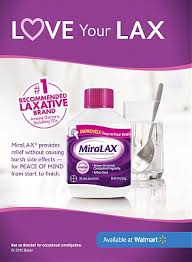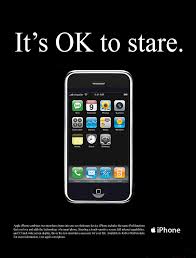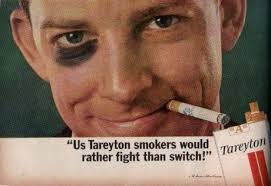When creating healthcare brand identities for patients, I often counsel clients that the best thing their brand can promise people is that no one will know that they have the condition being treated. I can see the disappointment bloom on their faces when they grow to accept that the subject of their careers—while very helpful or even essential—has the potential to turn people off. But this is an essential truth about healthcare branding that makes it different from consumer brand marketing.
If you haven’t been exposed to what has now become the rubber-stamp technique of prescription brand TV advertising, watch news shows like 60 Minutes and you’ll see a parade of branded templates that look like a procession at Lourdes. They all go something like this:
- People are seen doing normal activities with their family or friends;
- Then, suddenly, the topic of someone’s illness gets brought up as if it were the most likely conversation starter in the world, and all the other actors play along;
- Sometimes people hold up or point to signs that magically appear, containing graphs or graphics of how the drug works to relieve the illness’ impact;
- Finally, shots of the family or friends cavorting in carefree ways fill the screen as the voiceover pronounces all of the awful things (the “fair balance”) that might happen if you do, indeed, get prescribed said therapy.
We’ve seen this blueprint so many times that even we begin to act as if such promotional executions are normal. They’re not.

Xarelto commercial shows celebrities discussing the blood thinner over a round of golf and refreshments.
I’ve been in the business of healthcare branding for over 30 years, and I still scratch my head when I see regulated drug brands promoted by companies that completely ignore the cold facts of how people feel about their prescription medications: they are a necessary evil. Take, for instance, the long-running national advertising campaign for a prominent brand of pain reliever. Do septuagenarians really stroll the beach with their golden retriever, hold hands, twirl, and suddenly get transformed into Fred and Ginger because of their arthritis medication?

Have the marketers behind this campaign even talked meaningfully with senior citizens? There are not enough pain relievers in the world to make them happy about going up a flight of stairs, let alone playing fetch with a dog on a beach. And who in the world, as one current campaign showcases, openly loves their laxative?


This is shallow, wishful thinking on the part of marketers who are either too lazy to do their homework, or, worse, truly believe that patients are as obsessed with the brands they market as are the marketers whose careers depend upon the brand’s success.
These are examples of what I call The Celebration Fallacy: a type of magical thinking whereby healthcare manufacturers and their agencies imagine their brands will be received by the masses as heroes, thereby putting forth identities where the healthcare brands are the celebrated saviors of sick peoples’ normal lives.
The Celebration Fallacy is one of the predominant drivers of identity crises in healthcare branding today. The conceit goes something like this: all brands help you be you—in too many ways to count—and brand success is achieved only when people celebrate the brand as a hero in fitting tribute—by worshipping it, shouting about it, showing it off to others, fighting over it, and wrapping themselves in it like a flag. This conceit may actually hold true for some consumer brands. For instance, Apple brand identities are held up as beauty queens on a runway. Are you worth it?

Budweiser is “the king of beers,” and as such, enjoys some nice snuggling by its loyal subjects.

This “brand as hero” approach is actually a holdover from marketing’s adolescent past, as seen here in a now-forbidden print ad of a man so enthralled by his brand of cigarette that he’d resort to violence rather than have it taken from him.

But this “celebration” conceit turns to a full-blown fallacy when applied to healthcare brands. Like consumer brands, healthcare brands help you be you: doctor, patient, healthcare manufacturer, and award-seeking agency. However, healthcare brand success is not hero worship at all. Healthcare brands—in real life—elicit no celebrations, no shouting from the mountain tops, no fistfights. Instead, successful healthcare brands operate intentionally behind the scenes to protect the self’s desire to maintain normalcy, however “normal” is defined by the subject. Physicians identify as healers. Patients want to think of themselves as really all right, just like everyone else. And pharma, biotech, device companies, and their healthcare brands aspire to be heroic and applauded for all the good work they do.
But the hard truth is that sick people don’t want anyone to know about their illnesses or treatments. They don’t want to be defined by their condition or its remedies.

One common technique is for people to hold or literally become signs of their illness.
Physicians understand that people aren’t happy to see them under most circumstances, and derive an extra measure of satisfaction in knowing they are fighting the good fight even when patients don’t appreciate them. And healthcare manufacturers are viewed—very unfairly in my opinion—not as the beneficent institutions they are but rather as exploitative entities. It’s the nature of health and wellness and therefore a natural dynamic of the health and wellness business when building brand identities.
As branding professionals working in health and wellness industries, we must be vigilant to avoid The Celebration Fallacy and always keep in mind our brand’s underlying imperative to protect normalcy and incorporate it into our basic assumptions about what we do. Imagine this: the scene opens on a large dinner party; people are having normal interactions and talking about what real people discuss at a group supper; the voice over intones, “one of these people has bi-polar disorder, but no one knows who;” up comes the logo for the brand, and the “fair balance” side effects are announced as the people clear the dishes and prepare for desert. If you’ve ever known anyone with an illness serious enough for chronic medication, then you’d know that discretion is one of the qualities they value the most, not hero worship. They don’t want to see brands that “may cause dancing.” They want to see themselves, or who they wish to be: people whose lives are not defined by their illness or its medication. Ask your doctor (and his patients) if the truth is right for them.

Thanks, Vince. I totally agree with you and I am deeply grateful to you. I’d love if people I work with/for would read and share your text, but the first answer I get is : “I don’t read English”. If you happen to have it translated into Italian, Vince, please let me know it. I know to whom I will forward it. Franco